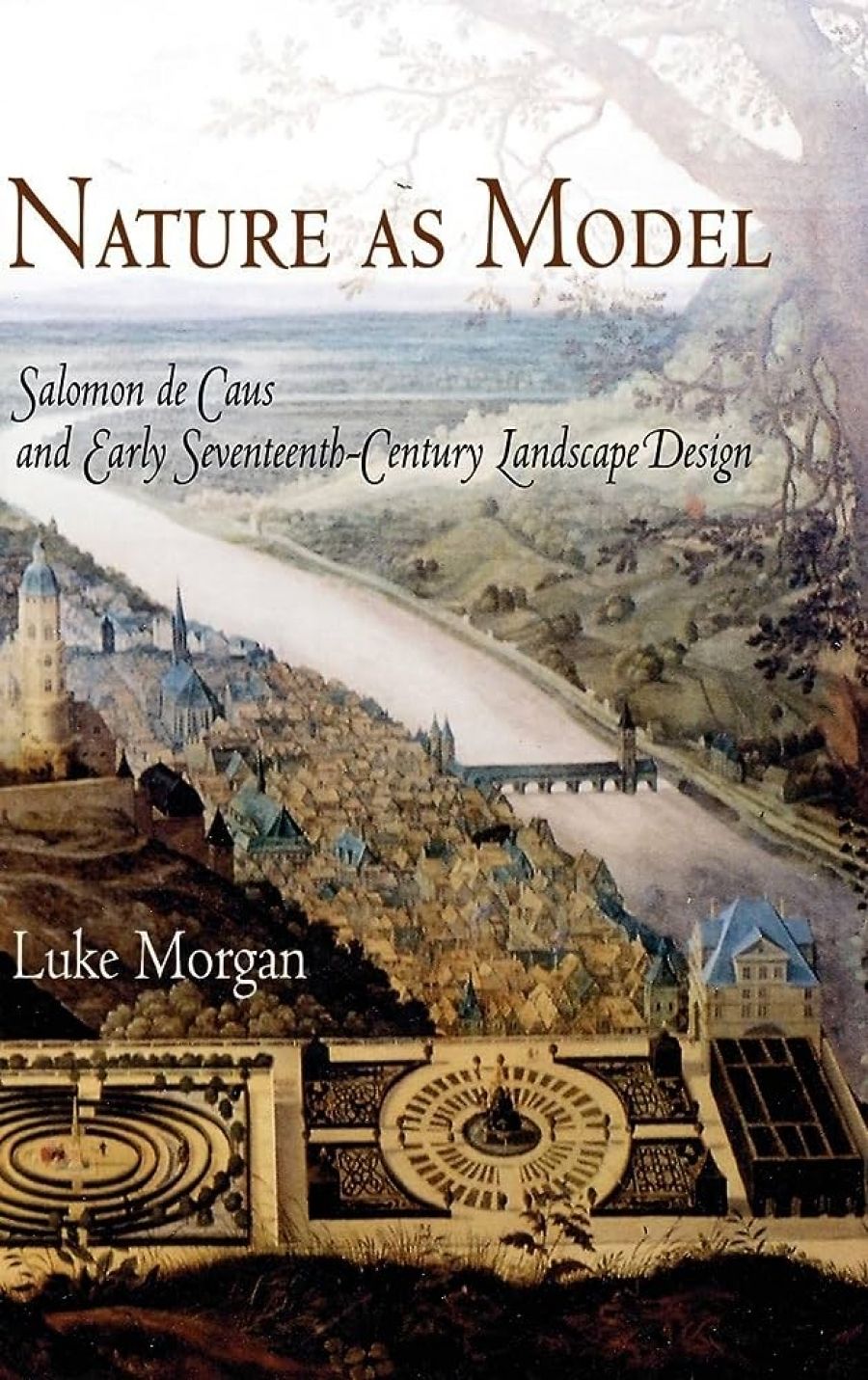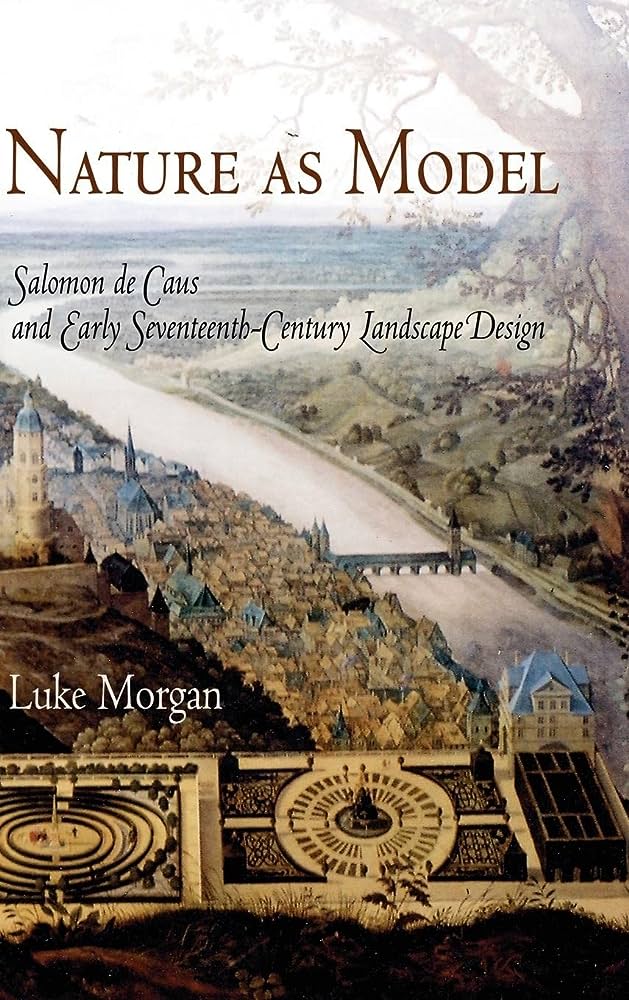
- Free Article: No
- Contents Category: History
- Review Article: Yes
- Article Title: Ruling the universe
- Online Only: No
- Custom Highlight Text:
In the early seventeenth century, the German princely territory of the Palatinate burst on to the centre of the European political stage. In August 1619 the Elector Palatine Frederick V – ruler of one of the most prosperous and culturally vibrant territories of the Holy Roman Empire, and a leader of Protestants throughout Europe – was elected king of Bohemia. This put him in opposition to the newly elected Holy Roman Emperor, Ferdinand II, an Austrian Hapsburg and leader of the Catholic forces, who had been deposed a year earlier by the same rebellious Bohemian estates which then elected Frederick. These events quickly fuelled what has come to be known as the Thirty Years War (1618–48), one of the most ferocious in Europe’s bloody history.
- Book 1 Title: Nature as Model
- Book 1 Subtitle: Salomon De Caus and early seventeenth century landscape design
- Book 1 Biblio: University of Pennsylvania Press, US$55 hb, 306 pp
- Book 1 Cover Small (400 x 600):

- Book 1 Cover (800 x 1200):

One consequence of those dramatic events was the political dispossession of Frederick and the ruin of the brilliant cultural and intellectual life at Heidelberg, the princely capital of the Palatinate, which had been promoted by the Elector and his wife, Elizabeth Stuart, daughter of James I of England. In 1623, the rich manuscript and rare book collection of the Palatine library was packed off to Rome, where it survives today as one of the jewels of the Vatican Library; and the Hortus Palatinus, the Palatine gardens considered one of the cultural masterpieces of seventeenth-century Europe, were destroyed in the battles and sieges which preceded the capitulation of Heidelberg in 1622.
Luke Morgan’s book is about the designer of those extraordinary gardens, the Frenchman Salomon de Caus (1576–1626). De Caus was a truly international figure, with major contributions to a whole series of landscape projects throughout Europe. His designs included the gardens of Coudenburg Palace in Brussels, and of Richmond Palace, Hatfield House, Somerset House and Greenwich Palace in London. De Caus was more than a garden designer, however: he was an expert in Vitruvian architectural theory, in hydraulic technology and automata, in geometry and mathematics, in fountain and grotto design, in musical composition, cartography and bridge construction.
One of Morgan’s innovations is to place de Caus in the tradition of the Italian engineer–architect, with a specialisation in hydraulic engineering. De Caus almost certainly spent time receiving technical training in Italy and looking at its gardens. The gardens of the Villa Medici at Pratolino were especially influential; and the traditions and different topoi of late sixteenth-century Italian gardens more generally were critical to his garden designs, grottoes and automata. As one contemporary writer commented on his 1612 design of the Parnassus at Somerset House, London: ‘It is thus a beautiful work and far surpasses the Mount Parnassus in the Pratolino near Florence.’ Pratolino was the seventeenth-century benchmark for excellence in garden design, and de Caus’s had surpassed it.
Morgan’s book is a significant advance on scholarship dealing with garden and landscape design in early modern Europe. It is the first biography of de Caus for more than seventy years, and it offers a meticulous re-examination of documentary and other evidence, as well as the first detailed analysis of de Caus’s substantial writings and design drawings. The analysis is partly an attempt to peel back the layers and to reveal the man behind the puzzling and also intriguing historical persona.
Morgan shows how the nineteenth century claimed de Caus as a Protestant hero of progress, an unacknowledged ‘martyr of science’, a victim of religious persecution and reactionary obscurantism who, it was claimed, had invented the steam engine. The late twentieth century, by contrast, rediscovered de Caus as the representative of a new Calvinist aesthetic, a Neoplatonism devoted to a theory of cosmic harmonies, and as a disciple of Hermetic and Rosicrucian mysteries; while his famous gardens were considered (in Umberto Eco’s words in Foucault’s Pendulum [1989]) as ‘an instrument for ruling the universe’. Morgan’s approach is to carefully evaluate de Caus according to the documentary record, to compare what de Caus built with what he wrote.
Morgan emphasises that de Caus’s learning must be seen in the context of earlier Italian engineer–architects such as Filippo Brunelleschi and Leonardo da Vinci. De Caus is a man interested in practical skills, in the empirical and pragmatic concerns of artisans. Morgan relates this to the ‘maker’s knowledge tradition’, a philosophical approach which tended to embrace empirical technological knowledge rather than received wisdom. Whereas de Caus certainly drew on classical sources such as Vitruvius, Hero, Euclid, Tacitus, Plutarch and especially Ovid, the value he placed on them was always measured by their practical utility for his work as a landscape designer and hydraulic engineer.
In line with this emphasis on utility, functionality and pragmatism, Morgan also argues that de Caus never developed a complete theory of landscape. It is quite unhelpful for historians to search for a narrative structure in his work. De Caus’s genius and influence lay in his ability to adapt various loosely related and contrasting motifs and techniques from sixteenth-century Tuscan gardens – mounts, fountains, grottoes, sculptures, trompe l’oeil tableaux. In this way, he established a style that would take seventeenth-century Europe by storm. Morgan’s de Caus becomes a truly ‘protean figure’. But this is also partly the result of the investigative method Morgan adopts: to explain de Caus by de Caus. Although patronised by some of the most powerful figures in Europe, de Caus seems curiously alone; his models come from Italy, and he seems barely touched by the circles in which he moves. Whereas Morgan’s fine scholarship has brought to life one of the most fascinating and complex landscape architects of early modern Europe, one also itches to know more about his interactions with the brilliant courts and cultures – Brussels, London and Heidelberg – for which he produced his designs.


Comments powered by CComment